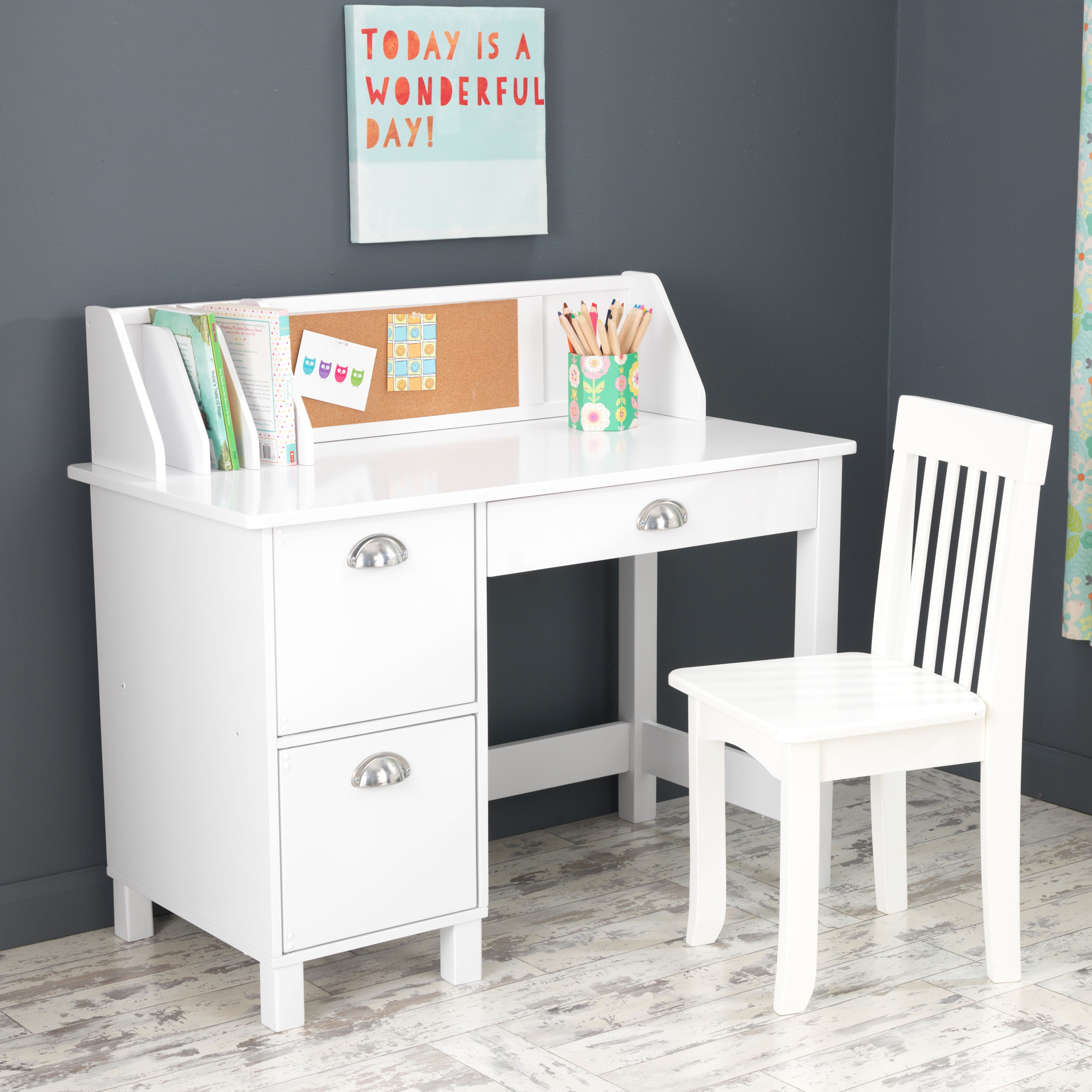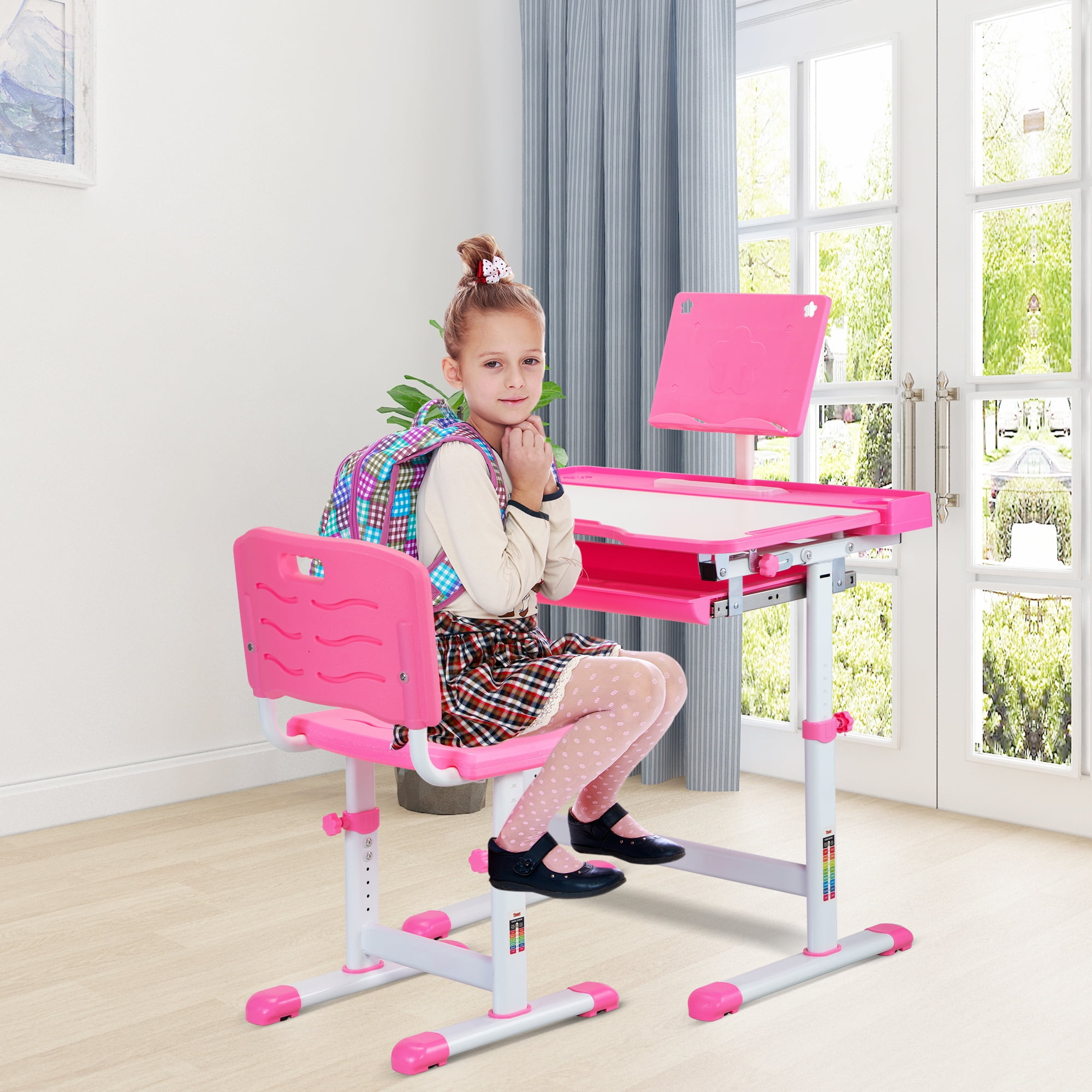Ergonomics and Child Development: Modern Kids Desk Chair

Proper posture and ergonomic seating are crucial for a child’s physical development, impacting their skeletal structure, muscle development, and overall well-being. A well-designed children’s desk chair directly contributes to healthy growth and reduces the risk of long-term musculoskeletal problems. The following sections detail the significance of ergonomics in children’s seating and the potential consequences of inadequate chair design.
Impact of Proper Posture on Physical Development
Maintaining correct posture while seated minimizes strain on the spine, promoting healthy spinal curvature development. Slouching, conversely, can lead to postural deviations such as kyphosis (rounded upper back) or lordosis (excessive inward curvature of the lower back). These deviations can cause pain, discomfort, and potentially long-term health issues. A supportive chair encourages proper alignment of the head, neck, shoulders, and back, fostering healthy growth and preventing musculoskeletal problems. Children spending significant time seated at desks for schoolwork or leisure activities require ergonomic support to mitigate these risks. The chair’s design should encourage upright posture without excessive pressure on any specific body part.
Importance of Adjustable Features in Accommodating Growth Spurts, Modern kids desk chair
Children experience rapid growth spurts during their development. Adjustable features in a kids’ desk chair are paramount to accommodate these changes. Height adjustability allows the chair to be tailored to the child’s current height, ensuring proper foot placement on the floor and minimizing strain on the legs and back. Adjustable seat depth ensures that the child’s thighs are supported without being compressed, preventing discomfort and improving circulation. An adjustable backrest allows for proper lumbar support, accommodating the natural curves of the spine and preventing slouching. The ability to adjust these features as the child grows ensures continued ergonomic support throughout their development.
Ergonomic Benefits of Different Chair Designs for Children
Various chair designs offer different ergonomic benefits for children. Standard chairs, while widely available, often lack the adjustability necessary to accommodate individual needs and growth. Ergonomic chairs, specifically designed with children’s ergonomics in mind, typically incorporate adjustable features like height, seat depth, and backrest. Kneeling chairs, while promoting good posture by encouraging an upright position, may not be suitable for all children and require careful consideration of individual needs and developmental stage. The choice of chair design should be based on the child’s age, size, and specific needs, prioritizing adjustability and proper support. A poorly designed chair, regardless of type, can negate any ergonomic benefits.
Potential Long-Term Health Consequences of Unsuitable Desk Chairs
Using unsuitable desk chairs can have significant long-term health consequences for children. Poor posture and inadequate support can lead to various musculoskeletal problems, impacting their quality of life and potentially requiring expensive medical intervention.
| Chair Type | Posture Issues | Health Risks | Long-Term Effects |
|---|---|---|---|
| Unsuitable/Non-Adjustable Chair | Slouching, rounded shoulders, forward head posture | Back pain, neck pain, headaches, muscle strain | Chronic back pain, scoliosis, osteoarthritis |
| Chair with Inadequate Lumbar Support | Increased lumbar lordosis, swayback | Lower back pain, sciatica | Disc degeneration, spinal stenosis |
| Chair with Incorrect Seat Height | Leg discomfort, improper foot placement | Poor circulation, leg cramps, knee pain | Varicose veins, joint problems |
| Chair with Insufficient Seat Depth | Pressure on the back of the knees, poor posture | Numbness, tingling, poor circulation | Long-term circulatory problems, nerve damage |
Design and Aesthetics of Modern Kids Desk Chairs

The design and aesthetics of a children’s desk chair significantly impact their comfort, posture, and overall learning experience. A thoughtfully designed chair can encourage proper sitting habits and foster a positive attitude towards study. Conversely, an uncomfortable or unattractive chair can lead to distraction and discomfort. This section explores the various styles, materials, and design elements that contribute to the appeal and functionality of modern children’s desk chairs.
Styles and Materials of Modern Kids Desk Chairs
Modern kids’ desk chairs utilize a diverse range of materials and styles to cater to various preferences and needs. The choice of materials directly influences the chair’s durability, maintenance requirements, and aesthetic appeal.
- Wood: Wooden chairs often offer a classic and sophisticated look, suitable for more traditional or minimalist settings. They can be durable and long-lasting, but require more maintenance to prevent scratches and damage. Hardwoods like oak or maple are more resilient than softer woods.
- Plastic: Plastic chairs are lightweight, easy to clean, and often more affordable. However, they may not be as durable as wood or metal and can be less comfortable for extended periods. High-quality plastics with ergonomic designs can mitigate these drawbacks.
- Metal: Metal chairs, typically steel or aluminum, offer excellent durability and stability. They are often used in combination with other materials like plastic or fabric for seating. However, metal can be less comfortable without proper padding and may be prone to rust if not properly treated.
- Fabric: Fabric upholstery adds comfort and visual appeal. Various fabrics, from breathable cotton to durable polyester blends, are used. Fabric upholstery requires regular cleaning and may be less durable than other materials, especially with spills and stains.
Design Elements Appealing to Children
The design elements of a children’s desk chair should be carefully considered to ensure appeal and functionality across different age groups and preferences.
- Younger Children (Preschool – Early Elementary): Bright colors, playful shapes (e.g., animal motifs), and adjustable height are key features. Soft, comfortable materials are also preferred. A sturdy base and easy-to-clean surfaces are essential.
- Older Children (Late Elementary – Middle School): More sophisticated designs with ergonomic features become important. Neutral colors or subtle patterns are often preferred. Adjustable features like lumbar support and armrests are valuable. Durability and longevity are major considerations.
Durability and Maintenance of Chair Materials
The durability and maintenance requirements of different materials significantly impact the chair’s lifespan and overall value.
- Wood: Requires regular cleaning and occasional polishing to maintain its finish. Scratches can be repaired with wood filler and refinishing. Durability varies depending on the wood type.
- Plastic: Easy to clean with soap and water. However, it can scratch or crack with impact. Durability varies depending on the plastic type and manufacturing quality.
- Metal: Relatively durable but can rust if exposed to moisture. Regular cleaning and occasional rust prevention treatment are recommended. Scratches may be less noticeable.
- Fabric: Requires regular cleaning, potentially spot cleaning for spills. Durability varies depending on the fabric type. Stain-resistant treatments can extend lifespan.
Modern Kids Desk Chair Design: The “ErgoBloom”
The ErgoBloom is a modern children’s desk chair designed for both functionality and aesthetic appeal. Its sleek, ergonomic design incorporates a vibrant yet calming color scheme of ocean blue and soft grey. The chair’s frame is constructed from sustainably sourced beechwood, offering both durability and a natural aesthetic. The seat is upholstered in a breathable, stain-resistant polyester fabric in ocean blue, providing comfort and easy maintenance. Unique features include adjustable height and tilt, a built-in lumbar support cushion, and armrests that fold away when not needed, enhancing desk space. The chair’s overall visual appeal is one of modern simplicity, blending seamlessly into a child’s study space while offering exceptional comfort and support. The ocean blue adds a playful touch, while the grey accents provide a sense of calm and sophistication. The smooth curves of the chair and the subtle wood grain create a visually appealing and inviting design. The ErgoBloom is designed to grow with the child, adapting to their changing needs as they mature.
